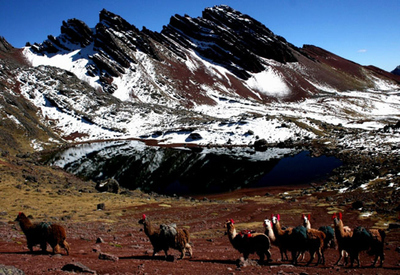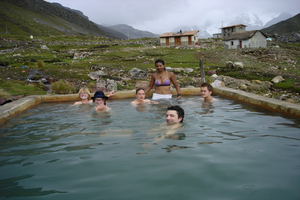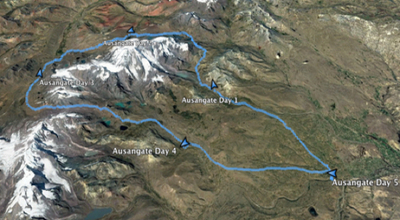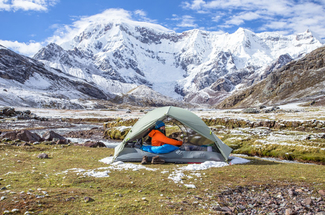Peru is becoming quite famous among hikers and other outdoors enthusiasts for its many excellent alpine trails. Situated at the heart of the Andes mountains in South America, the country has some of the most breathtaking and pristine treks in the entire world, winding through mountains and past rivers, lakes and glaciers – it’s a land of otherworldly views. Part of the appeal of hiking in Peru is that, though there are many well-known and popular treks, there are also still quite a few that have yet to be overrun by tourists. One of our favorites is the Ausangate trek in southern Peru. Circling the Ausangate Massif, the highest peak of the region at 6,372m, this trek takes you past sparkling lakes and dazzling glaciers along a path where you’re unlikely to see many other tourists. It is considered a challenging trek, but those who put in the effort will find themselves well-rewarded.

There are a few other concerns besides altitude sickness as well. Due to its remote location, if you become injured or ill it is very difficult to be evacuated by emergency personnel. Speaking Spanish at a reasonably high level is also an absolute necessity for dealing with any local people you might encounter. Weather can be an issue as well, with snow or other difficult conditions disrupting the trek. At times, it can be a little bit difficult to find the correct path.

The best time of year to do this trek is in the dry season lasting from May to September. Despite the general lack of precipitation, it’s still possible to see a little snow or rain occasionally, and you’ll have to deal with some pretty cold weather since these months coincide with winter in the southern hemisphere.
All departures for this trek typically leave from the city of Cusco. The trailhead in Tinqui is about 3.5 hours by bus from Cusco. From there, the typical route goes as follows:

Day 1: Cusco – Tinqui – Upis
Day 2: Upis – Lake Ausangate Q’ocha
Day 3: Lake Ausangate Q’ocha – Qampa
Day 4: Qampa – Pacchanta
Day 5: Pacchanta – Cusco
Many tours will also include the option to visit the beautiful rainbow-colored mountain of Vinicunca (Rainbow Mountain) as a side trip from the main trek.
The items that you bring along will really depend on how you plan to do the trek. Since it is a very challenging trek with certain dangers involved, we highly recommend using a qualified tour agency to book a guided expedition. In this case, you should consult your tour provider to find out what you should bring with you since most of the items will be supplied for you. Below is a sample list of some of the things you’ll need. If you decide to undertake this adventure on your own, make sure to consult other guides since this is not a comprehensive list.

There are many companies operating guided treks to Ausangate out of Cusco. If you’re flying into Lima (where nearly all international flights arrive), it’s common to travel across the country by bus and sightseeing, eventually ending up in Cusco. There are many companies running along this route in Peru, but the only one which offers a hop on hop off style service is Peru Hop. This hop on hop off system allows you to travel flexibly and see all the important sites along the way, so we highly recommend you reserve a ticket.
Once in Cusco, you’ll have the ability to shop around a little bit and find one which suits you, since the pace of the trek, accommodations provided and price will differ between providers. If you’d prefer to book something online, there are a couple companies selling tours online including Ausangate Peru and Apus Peru. It also may be a good idea to get your feet wet with another trek from Cusco before attempting something as challenging as Ausangate.
We hope the information that we’ve presented has convinced you to see one of Peru’s best kept secrets for yourself! Happy trekking!